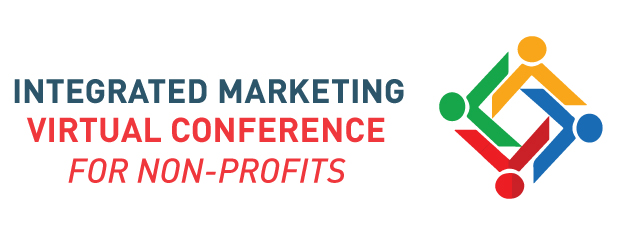
Part 1: Mapping Your Mix -- Is Your Nonprofit Providing the Right Mix of Content?
This article was written by guest author Laura Quinn, founder and executive director of Idealware, a nonprofit that helps other nonprofits make smart decisions about software. For more information about your organization’s communications mix, download Idealware’s free Practical Guide to Integrated Communications, which provides a series of workbooks to walk you step-by-step through the process of integrating all your channels into cohesive messaging. This article originally ran in NTEN:Change.
 Odds are good that your organization is using multiple communications channels to reach people, from social media to direct mail and email to websites and blogs. Because each can attract a different audience, and may be better-suited for certain types and lengths of content, coordinating among them all can be difficult. You want to provide useful, interesting, mission-related information to use each channel successfully and meet the expectations of the people who follow you—but how do you keep each channel different enough to be interesting on its own without turning content-creation into a full-time job?
Odds are good that your organization is using multiple communications channels to reach people, from social media to direct mail and email to websites and blogs. Because each can attract a different audience, and may be better-suited for certain types and lengths of content, coordinating among them all can be difficult. You want to provide useful, interesting, mission-related information to use each channel successfully and meet the expectations of the people who follow you—but how do you keep each channel different enough to be interesting on its own without turning content-creation into a full-time job?
Last year, we surveyed readers of the NTEN: Change journal, published quarterly by the Nonprofit Technology Network, about their own balance of content types across their different communications channels and learned that organizations are using an average of almost four different channels as part of their communications mix.
Using each to its fullest potential takes work—it’s time-consuming to write a lot of new content for your blog, but it starts to feel redundant if you post the same information there as on your Facebook page or Twitter feed. A little forethought can help you maintain the balance of information you’re posting, or feel you should be, and ultimately save time. To start sharing your content-related efforts among each of your channels requires strategic thinking in four areas: Creating, Curating, Promoting, and Community-Building. Let’s look at them one at a time.
Creating
Are you creating new, original, informational content for each channel you’re using? You may not have to. People frequently write news stories or opinion pieces for some channels, like their websites, email newsletters, or blogs, while using others to share reposts, links, or other means of “re-using” content. Original content is what many organizations think about first when looking for high-quality ways to communicate with their constituents, but it’s certainly not the only way.
Curating
Increasingly, organizations are talking about “curating” content as another way to provide a lot of value in communications. For many, this means following news, blogs, or other resources in your topic area and linking to particularly useful resources. Curating information created by other organizations and individuals is a useful way to bring other voices into your mix, but don’t forget you can also curate your own materials—for instance, you could use your mailed newsletter to summarize the best posts published to your own blog each month.
Promoting
Promoting your own campaigns, events, and fundraising appeals is an important part of your external communications. It can also be a substantial piece of channels like direct mail, which you may not be using very often. Don’t be shy about promoting your own cause—presumably, that’s why people are on your list to begin with. But since it’s never pleasant to correspond with someone who does nothing but continually ask you to do stuff, make sure you’re providing other value as well, either on the same channel or on different ones.
Community Building
The ability to engage your audience is one of the benefits of online communications. Inspiring them to respond to posts and to talk to each other and generally creating a sense of community for your cause can, and should, be an important part of your mix—particularly for social media channels. How do you go about this? Ask questions of readers, encourage them to post comments, and solicit their answers to questions posted by other readers. The extent to which you should devote efforts will vary among channels. You’re unlikely to create a lot of conversation through your direct mail program, for example, but it might very well be a focus for your Facebook page or blog strategy.
The #GivingTuesday Holiday Wrap-up: Bigger Gifts in 2013?
This article was written by guest author Tori Bundy, Senior Account Executive, Digital Media at CDR Fundraising Group.
 Since its launch on November 27, 2012, there has been plenty of chatter circulating about Giving Tuesday. Giving Tuesday is the day of philanthropic giving that began last year in response to the Black Friday and Cyber Monday retail shopping holidays. So, did the day of giving gain traction in 2013?
Since its launch on November 27, 2012, there has been plenty of chatter circulating about Giving Tuesday. Giving Tuesday is the day of philanthropic giving that began last year in response to the Black Friday and Cyber Monday retail shopping holidays. So, did the day of giving gain traction in 2013?
In 2012, over 2,500 nonprofits participated directly in the program, while countless others executed their own independent campaigns. Blackbaud reported that over $10.3 million was raised on Giving Tuesday in 2012, a 46 percent increase from the same Tuesday the year before. Twitter users across the world also sent over 50 million tweets promoting Giving Tuesday, resulting in record breaking trending on the platform.
After these numbers were posted, there was a lot of speculation as to whether or not the trend would carry into 2013. Since this year’s Giving Tuesday, which fell on December 3, nonprofit marketers have been eagerly crunching their numbers to answer that very question.
Here at CDR Fundraising Group, we have finished compiling our numbers and are happy to report that our clients saw great success with their 2013 Giving Tuesday campaigns. This year, our clients generated a total of $233,635 compared to $41,062 in 2012. From emails to promoted posts and tweets to website lightboxes, we tested a number of different outreach methods to try to capitalize on the giving holiday. The best success was seen via Giving Tuesday email campaigns and lightboxes that were launched on clients’ websites. Across all clients, we saw an increase in average gift, overall response rate and total funds generated this year compared to 2012.
Over 10,000 nonprofits participated directly in the Giving Tuesday program this year, and thousands more executed their own campaigns. Blackbaud reported that online giving was up by 90 percent ($19.1 million) compared to 2012. Also, many major corporations highlighted Giving Tuesday and encouraged the public to give. Google hosted an all-day “Hangout-a-thon,” an online telethon encouraging users to donate. They also created a Giving Tuesday Google+ page, which highlighted particular organizations throughout the day.
Here are a few learnings from our experiences this year:
- You don’t have to wait for Giving Tuesday to ask, but keep the focus on the end game. If you are planning to run a lightbox campaign, there’s no need to wait until Giving Tuesday to go live, but keep the donation call to action general. You don’t want to risk losing your potential donor’s attention by asking them to wait a few days to give—strike while the iron is hot! Running the lightbox all weekend will generate buzz and capture donor traffic that might have otherwise been left untapped.
- Get the word out about your campaigns through social media, and ask your donors to share reports of their gifts online. At its heart, Giving Tuesday is a social media-based movement, so make sure you are in the conversation as much as possible. Use the #GivingTuesday hashtag, or even come up with your own hashtag for your specific campaign.
- As always, ensure your messaging about Giving Tuesday is consistent across channels. Use a focused, integrated approach for that day, and tailor the messaging to perform for each channel you plan to market in.
- Once you get the donor to click, make sure it’s as easy as possible for them to make that gift. Keep your donation forms simple and easy to interact with on a desktop, tablet or phone. You hooked the donor, now make sure to get that gift!
Many Giving Tuesday critics have stated that the holiday is simply front-loading gifts that would have come in during the holiday season anyhow, arguing that marketers shouldn’t ask donors to give on a particular day for this reason. In November, Blackbaud reported that through October, online giving was up 4.4 percent compared to 2012. Although the full 2012/2013 comparison report is not in yet, this is a good sign. Retail marketers face the same conundrum in asking shoppers to execute purchases on specific days, such as Black Friday and Cyber Monday, but in most cases their numbers are on the rise year over year as well. We can only hope that Giving Tuesday increases an overall trend and focus toward more widespread charitable giving.
While we don’t expect donors to be lining up outside the doors of nonprofits on the eve of Giving Tuesday next year to ensure they will get their gifts in, 2013 provided proof to the idea that Giving Tuesday is primed to continue breaking records from year to year.
Share, Like and Post | | Article Link | CommentThe Integrated Marketing Virtual Conference for Nonprofits

It’s not every day that a conference like this comes along: One day. Six sessions from the convenience of your own desk. Tons of expert tips, insights, and examples for nonprofits. And, it’s FREE!
I’m talking about the IMAB’s Integrated Marketing Virtual Conference for Nonprofits on January 30, 2014. We’ve pulled together leading practitioners of integrated fundraising and marketing to cover topics including:
- Integrated marketing and the donor lifecycle: Balancing short-term and long-term engagement for greater lifetime value
- Using integrated marketing to connect with generations X, Y, & Z
- Combining digital and traditional channels for integrated fundraising success
- Getting fundraising and non-fundraising departments on the same integrated page
- The budgeting balance: How should nonprofits save and spend their next dollars?
- Creating a balanced scorecard for integrated fundraising success
Each session includes real-world examples and case studies to illustrate key concepts and help nonprofit professionals to develop and deliver on an integrated fundraising and marketing strategy.
Sign up today for any or all of the sessions. It’s absolutely FREE, and it’s an event you won’t want to miss!
Share, Like and Post | | Article Link | CommentEmail Design for Mobile Devices
This article was written by guest author Scott VanderLey, VP Digital Strategy, Russ Reid.
 In integrated fundraising and marketing, we often think of bringing together multiple channels, but we also need to keep in mind the multiple ways that our constituents access individual channels. For example, mobile technology is a rapidly growing trend. The rise of email engagement via mobile devices is pretty staggering. A March 2013 report showed the percentage of email opens via mobile devices – that’s smartphones and tablets –- at 43%. Just two years ago, that number was only 13%. At that rate, mobile devices are slated to become the primary vehicles for email engagement in less than one year from today. Given the importance of email to donor retention and cultivation, nonprofits must get ready now.
In integrated fundraising and marketing, we often think of bringing together multiple channels, but we also need to keep in mind the multiple ways that our constituents access individual channels. For example, mobile technology is a rapidly growing trend. The rise of email engagement via mobile devices is pretty staggering. A March 2013 report showed the percentage of email opens via mobile devices – that’s smartphones and tablets –- at 43%. Just two years ago, that number was only 13%. At that rate, mobile devices are slated to become the primary vehicles for email engagement in less than one year from today. Given the importance of email to donor retention and cultivation, nonprofits must get ready now.
Usage still spans multiple devices. For instance, many users indicate that they first view email on a handheld, and handle follow-up via a desktop or laptop. Tablets, meanwhile, offer a significantly different experience than most smartphones. So what nonprofits need is a solution that works effectively across multiple platforms and sizes.
Enter: responsive email design. As with responsive Web design, this approach ensures that users have an optimal experience with your email, regardless of the device they use. Stated simply, this involves the creation of two CSS (cascading style sheets) versions of your email, with one optimized for a smaller screen. Coding is introduced to serve up one treatment or another based on screen size. This is responsiveness in its simplest form. Media queries and additional versions can be added to serve multiple devices -- say, a PC, tablet and mobile phone.
Responsive email design is the best possible solution to users engaging through multiple devices, but even organizations that are not quite ready to take that step need to be optimizing email communications for mobile use. A poor mobile experience at the outset can doom not only one campaign, but donor responsiveness beyond that point as well. We’d strongly advise that if you’re designing a single email treatment for your fundraising campaign or newsletter, you do that with mobile in mind. Considerations include:
- Layout: single columns not exceeding 600 pixels are ideal for handhelds.
- Images: must be optimized for mobile. One good option is fluid image layouts, which adapt size to different dimensions by using percentages.
- Font size: 13 pixels minimum is a good rule of thumb.
- Buttons: must be large enough to be usable on small touch-screens -- links, too.
- Length: keep it concise.
Deploying a Rapid Response Fundraising Campaign
 About this time last year, I wrote about an emergency fundraising appeal launched by the Christian Appalachian Project (CAP) after a string of devastating tornadoes tore through Kentucky. It was a great example of how a bit of preparedness on the part of a nonprofit can help provide a big bump in your results when families in crisis need it most.
About this time last year, I wrote about an emergency fundraising appeal launched by the Christian Appalachian Project (CAP) after a string of devastating tornadoes tore through Kentucky. It was a great example of how a bit of preparedness on the part of a nonprofit can help provide a big bump in your results when families in crisis need it most.
CAP is an interdenominational, nonprofit Christian organization committed to serving people in need in Appalachia by providing physical, spiritual and emotional support through a wide variety of programs and services. They focus on promoting dignity and independence among Appalachian residents struggling against poverty.
Just as a bit of reference, the Appalachian region stretches from the northeast corner of Mississippi through the southwest corner of New York. When Superstorm Sandy hit the Mid-Atlantic and Northeast United States last year, New York was one of the hardest hit areas of the 13 states. Many people CAP serves in the Appalachian Mountains of West Virginia were hit with blizzard conditions and required emergency assistance.
Each fall CAP deploys a late-fall “ever-ready” emergency campaign, and because of the generous support from donors in past years, the relief teams hit the ground running to aid hundreds that were affected by Superstorm Sandy. The direct response fundraising team had to quickly rework their planned fall emergency campaign to solicit additional resources and focus specifically on this relief effort. If the campaign could launch while Superstorm Sandy recovery efforts were still in the news, CAP could leverage the exposure for increased results.
The direct mail team quickly drafted an emergency appeal and used “Rapid Response Team – Disaster Strikes” letterhead and envelopes, kept on hand for incidents such as these. The digital team worked closely with the direct mail team to incorporate email, a dedicated URL on the mail appeal, real estate on CAP’s homepage, and search engine marketing. Videographers were deployed to the scene to document clean-up efforts and emergency assistance. This video was used in email communications and on the CAP website.
The results:
- Exceeded revenue targets by $25,000
- Average gift online: $86.44 (higher than standard online average gift)
- Average gift offline: $45.00 (almost double standard direct mail average gift)


















